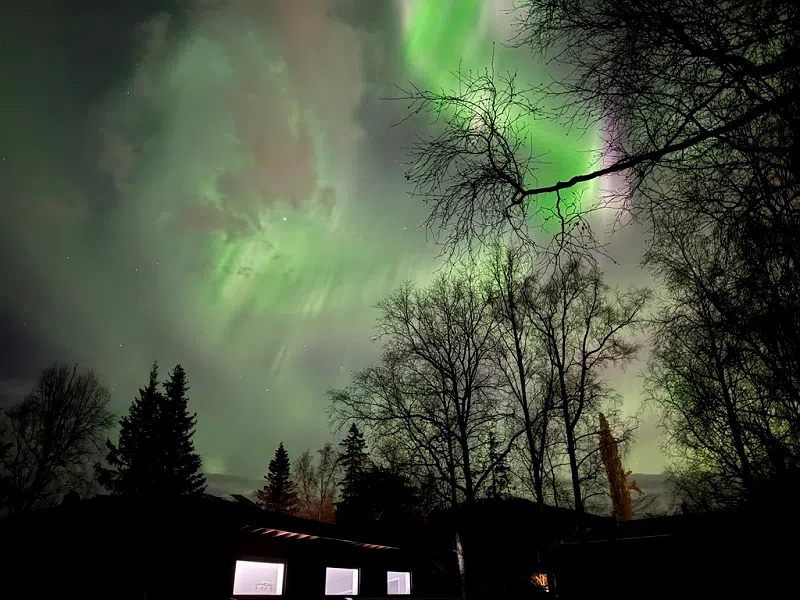NOVEMBER 27, 2024:
NEW YORK (AP) — This Thanksgiving, solar storms may produce faint auroras across the northern rim of the United States.
Pale auroras may be seen across many northern states Thursday and Friday (Nov. 28-29, 2024), but they may be brief and and seeing them will depend on how intense the solar storms get, NOAA meteorologist Mike Bettwy said in an email.
Much of the following states are best positioned for potential auroras: Washington, Montana, the Dakotas, Minnesota, Wisconsin, Michigan and Maine. Northern parts of Idaho, Wyoming, New York, Vermont and New Hampshire may also see auroras.
Space weather experts say auroras could be visible from 10 p.m. EST Thursday to 1 a.m. Friday EST, though it’s difficult to pin down an exact window. Updated forecasts may be available as the event draws closer on NOAA’s Space Weather Prediction Center website or an aurora forecasting app.
To spy the spectacle, wait for clear skies to get dark and then go outside, ideally away from bright city lights. Taking a picture with a smartphone camera may also reveal hints of the aurora that aren’t visible to the naked eye.
The sun is currently at the maximum phase of its 11-year cycle, making solar surges and northern lights more frequent. Earlier this week, the sun shot a pulse of high-energy plasma towards Earth.
The active period is expected to last for at least another year, though scientists won’t know when solar activity peaked until months after the fact, according to NASA and the U.S. National Oceanic and Atmospheric Administration.
Experts don’t expect major communication disruptions from this week’s solar storm.
In May, NOAA issued a rare severe geomagnetic storm warning — it was the strongest storm in more than two decades, producing light displays across the Northern Hemisphere. Last month, a powerful solar storm dazzled skygazers far from the Arctic Circle when auroras appeared in unexpected places, including Germany, the United Kingdom, New England and New York City.
OCTOBER 15, 2024:
NEW YORK (AP) — Expect to see more northern lights in unusual places as the sun continues to sizzle, space weather forecasters said Tuesday (Oct. 15, 2024).
Strong solar storms this year have triggered shimmering auroras much farther south than usual, filling skies with hues of pink, purple, green and blue.
The sun is currently at the maximum phase of its 11-year cycle, making solar surges and northern lights more frequent. This active period was expected to last for at least another year, though when solar activity will peak won’t be known until months after the fact, according to NASA and the U.S. National Oceanic and Atmospheric Administration.
This solar cycle has yielded more colorful auroras farther south and more are likely, said NASA’s Kelly Korreck.
“We still could possibly get some good shows in the next few months,” she said.
Such storms can also temporarily disrupt power and communications. Ahead of a solar outburst, NOAA would alert operators of power plants and spacecraft in orbit.
In May, NOAA issued a rare severe geomagnetic storm warning. The storm that slammed Earth was the strongest in more than two decades, producing light displays across the Northern Hemisphere. That same month, scientists recorded the biggest flare erupting from the sun, but Earth was out of the way.
Previous solar cycles have produced storms more intense than May’s so space forecasters are keeping a close eye on the sun to prepare for any major disruptions, said NOAA’s Bill Murtagh.
Last week, a powerful solar storm dazzled skygazers far from the Arctic Circle when auroras appeared in unexpected places including Germany, the United Kingdom, New England and New York City.








Comments